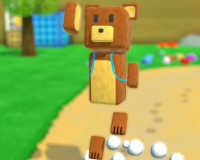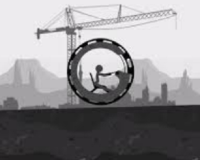
Advertisement
Doors: THE GREAT OUTDOORS
Doors: The Great Outdoors expands the core DOORS formula by moving part of the exploration into open-air environments. Players still progress through connected areas, but instead of narrow hallways and small rooms, they navigate outdoor spaces with wider visibility and varied terrain. This change alters how movement and awareness function, as threats can now come from multiple directions, and hiding spots are less predictable. The outdoor environment also introduces natural obstacles that influence both player movement and the way entities behave.
Navigation and environment interaction
Movement in the outdoor section involves choosing paths and reacting to the environment in real time. Some routes are shorter but riskier, leading past areas where hostile entities frequently appear. Others are longer and may offer safer travel or opportunities to collect helpful items. Tools such as a compass assist with orientation, while a lantern can be used to improve visibility in darker sections. Players must adapt to shifting terrain, which can slow progress or create blind spots where entities might be hidden.
Threats and survival approach
Entities unique to The Great Outdoors each present distinct challenges. Some move quickly and patrol open spaces, forcing players to avoid them by taking cover or waiting for an opening. Others rely on surprise, appearing in unexpected places and requiring quick reaction to avoid capture. Environmental sounds and visual cues become important for predicting danger, as players cannot always rely on seeing threats from a distance in time to prepare.
Core gameplay aspects in The Great Outdoors:
- Open-space exploration with multiple route options
- Navigation tools such as the compass and lantern
- Entities with varied movement patterns and attack triggers
- Terrain effects on speed, visibility, and safety
- Resource collection and management during exploration
Player decision-making
The outdoor setting demands more planning compared to traditional indoor runs. Players must weigh the risk of exploring side areas against the potential benefit of finding items or avoiding dangerous encounters. Effective resource management plays a major role, as items used too early may leave the player vulnerable later. Decisions on when to move quickly and when to stay hidden directly impact survival chances.
Replay value and strategy refinement
Repeated runs through The Great Outdoors allow players to learn the layout, identify safer paths, and refine strategies for each entity type. Because the area offers multiple route possibilities and unpredictable encounters, no two runs play out exactly the same way. Over time, players can develop a consistent approach, balancing exploration with caution to maximize both survival and progress within the game.














































































